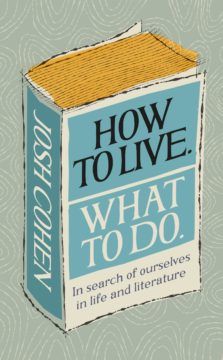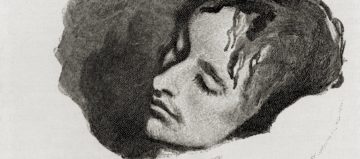From NMAAHC:
 No one has played a greater role in helping all Americans know the black past than Carter G. Woodson, the individual who created Negro History Week in Washington, D.C., in February 1926. Woodson was the second black American to receive a PhD in history from Harvard—following W.E.B. Du Bois by a few years. To Woodson, the black experience was too important simply to be left to a small group of academics. Woodson believed that his role was to use black history and culture as a weapon in the struggle for racial uplift. By 1916, Woodson had moved to DC and established the “Association for the Study of Negro Life and Culture,” an organization whose goal was to make black history accessible to a wider audience. Woodson was a strange and driven man whose only passion was history, and he expected everyone to share his passion.
No one has played a greater role in helping all Americans know the black past than Carter G. Woodson, the individual who created Negro History Week in Washington, D.C., in February 1926. Woodson was the second black American to receive a PhD in history from Harvard—following W.E.B. Du Bois by a few years. To Woodson, the black experience was too important simply to be left to a small group of academics. Woodson believed that his role was to use black history and culture as a weapon in the struggle for racial uplift. By 1916, Woodson had moved to DC and established the “Association for the Study of Negro Life and Culture,” an organization whose goal was to make black history accessible to a wider audience. Woodson was a strange and driven man whose only passion was history, and he expected everyone to share his passion.
This impatience led Woodson to create Negro History Week in 1926, to ensure that school children be exposed to black history. Woodson chose the second week of February in order to celebrate the birthday of Lincoln and Frederick Douglass. It is important to realize that Negro History Week was not born in a vacuum. The 1920s saw the rise in interest in African American culture that was represented by the Harlem Renaissance where writers like Langston Hughes, Georgia Douglass Johnson, Claude McKay—wrote about the joys and sorrows of blackness, and musicians like Louie Armstrong, Duke Ellington, and Jimmy Lunceford captured the new rhythms of the cities created in part by the thousands of southern blacks who migrated to urban centers like Chicago. And artists like Aaron Douglass, Richard Barthe, and Lois Jones created images that celebrated blackness and provided more positive images of the African American experience.
Woodson hoped to build upon this creativity and further stimulate interest through Negro History Week. Woodson had two goals. One was to use history to prove to white America that blacks had played important roles in the creation of America and thereby deserve to be treated equally as citizens. In essence, Woodson—by celebrating heroic black figures—be they inventors, entertainers, or soldiers—hoped to prove our worth, and by proving our worth—he believed that equality would soon follow. His other goal was to increase the visibility of black life and history, at a time when few newspapers, books, and universities took notice of the black community, except to dwell upon the negative. Ultimately Woodson believed Negro History Week—which became Black History Month in 1976—would be a vehicle for racial transformation forever.
More here. (Throughout February, at least one post will be dedicated to honoring Black History Month. The theme this year is: The Family)
 In 2015, Bon Appétit ran an article by the food writer Dawn Perry about hamantaschen, the triangular cookies that are a tradition during the Jewish festival of Purim. It was headlined — brace yourself for outrage — “How to Make Actually Good Hamantaschen.”
In 2015, Bon Appétit ran an article by the food writer Dawn Perry about hamantaschen, the triangular cookies that are a tradition during the Jewish festival of Purim. It was headlined — brace yourself for outrage — “How to Make Actually Good Hamantaschen.”
 Much of Cohen’s work is driven by his aversion to a type of spatial metaphor that minimises the value and variety of familiar experience. His first book, Spectacular Allegories (1998), a study of modern American fiction and journalism that emerged from his PhD, questions the postmodern idea that spectacle somehow floats “outside” history and “above” material reality. It was written before Cohen was a practitioner, or even employed Freudian theory. He told me that his “obsessional preoccupation – and I’m pointedly using the singular – has been what is concealed in what is right in front of us, in what is present”. He isn’t only talking about unconscious blind-spots. The book’s title is “filched”, as he puts it, from the American poet Wallace Stevens, and Cohen expressed a particular fondness for Stevens’s idea of a “strange presence that irradiates through the world that his poems are always gesturing towards and trying to get us to see”.
Much of Cohen’s work is driven by his aversion to a type of spatial metaphor that minimises the value and variety of familiar experience. His first book, Spectacular Allegories (1998), a study of modern American fiction and journalism that emerged from his PhD, questions the postmodern idea that spectacle somehow floats “outside” history and “above” material reality. It was written before Cohen was a practitioner, or even employed Freudian theory. He told me that his “obsessional preoccupation – and I’m pointedly using the singular – has been what is concealed in what is right in front of us, in what is present”. He isn’t only talking about unconscious blind-spots. The book’s title is “filched”, as he puts it, from the American poet Wallace Stevens, and Cohen expressed a particular fondness for Stevens’s idea of a “strange presence that irradiates through the world that his poems are always gesturing towards and trying to get us to see”. We knew that the persistent cough spelled his end. The fever had preceded it, just as it had in his mother, brother and dozens around him. The contagion that was devastating society had him in its throes. When he finally died, a postmortem showed his lungs had been decimated. He’d suffocated, drowning in his own inflammatory fluids. The young English poet
We knew that the persistent cough spelled his end. The fever had preceded it, just as it had in his mother, brother and dozens around him. The contagion that was devastating society had him in its throes. When he finally died, a postmortem showed his lungs had been decimated. He’d suffocated, drowning in his own inflammatory fluids. The young English poet  In May 1803 a group of enslaved Africans from present-day Nigeria, of Ebo or Igbo descent, leaped from a single-masted ship into Dunbar Creek off St. Simons Island in Georgia. A slave agent concluded that the Africans drowned and died in an apparent mass suicide. But
In May 1803 a group of enslaved Africans from present-day Nigeria, of Ebo or Igbo descent, leaped from a single-masted ship into Dunbar Creek off St. Simons Island in Georgia. A slave agent concluded that the Africans drowned and died in an apparent mass suicide. But  The expression of frustration could have been sent from any tier in travel-restricted Britain: “Where do you go in July? For me, I cant answer. I am longing to go to London, & hoping to the last. That is all. For the present, … certainly the window has been opened twice – an inch – but my physician shakes his head or changes the conversation (which is worse) whenever London is mentioned. But if it becomes possible, I shall go – will go! Putting it off to another summer is like a never.”
The expression of frustration could have been sent from any tier in travel-restricted Britain: “Where do you go in July? For me, I cant answer. I am longing to go to London, & hoping to the last. That is all. For the present, … certainly the window has been opened twice – an inch – but my physician shakes his head or changes the conversation (which is worse) whenever London is mentioned. But if it becomes possible, I shall go – will go! Putting it off to another summer is like a never.” Boston is one of
Boston is one of For the third time in
For the third time in 
 You may not have heard of Robin Dunbar. But you will, perhaps, know of his work. Dunbar, now emeritus professor of evolutionary psychology at Oxford University, is the man who first suggested that there may be a cognitive limit to the number of people with whom you can comfortably maintain stable social relationships – or, as Stephen Fry put it on the TV show QI, the number of people “you would not hesitate to go and sit with if you happened to see them at 3am in the departure lounge at Hong Kong airport”. Human beings, Dunbar found when he conducted his research in the 1990s, typically have
You may not have heard of Robin Dunbar. But you will, perhaps, know of his work. Dunbar, now emeritus professor of evolutionary psychology at Oxford University, is the man who first suggested that there may be a cognitive limit to the number of people with whom you can comfortably maintain stable social relationships – or, as Stephen Fry put it on the TV show QI, the number of people “you would not hesitate to go and sit with if you happened to see them at 3am in the departure lounge at Hong Kong airport”. Human beings, Dunbar found when he conducted his research in the 1990s, typically have  No one has played a greater role in helping all Americans know the black past than Carter G. Woodson, the individual who created Negro History Week in Washington, D.C., in February 1926. Woodson was the second black American to receive a PhD in history from Harvard—following W.E.B. Du Bois by a few years. To Woodson, the black experience was too important simply to be left to a small group of academics. Woodson believed that his role was to use black history and culture as a weapon in the struggle for racial uplift. By 1916, Woodson had moved to DC and established the “Association for the Study of Negro Life and Culture,” an organization whose goal was to make black history accessible to a wider audience. Woodson was a strange and driven man whose only passion was history, and he expected everyone to share his passion.
No one has played a greater role in helping all Americans know the black past than Carter G. Woodson, the individual who created Negro History Week in Washington, D.C., in February 1926. Woodson was the second black American to receive a PhD in history from Harvard—following W.E.B. Du Bois by a few years. To Woodson, the black experience was too important simply to be left to a small group of academics. Woodson believed that his role was to use black history and culture as a weapon in the struggle for racial uplift. By 1916, Woodson had moved to DC and established the “Association for the Study of Negro Life and Culture,” an organization whose goal was to make black history accessible to a wider audience. Woodson was a strange and driven man whose only passion was history, and he expected everyone to share his passion. Robert Hockett over at the New Labor Forum:
Robert Hockett over at the New Labor Forum: Ravinder Kaur in Aeon:
Ravinder Kaur in Aeon: Danielle Allen in The Atlantic:
Danielle Allen in The Atlantic: